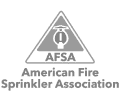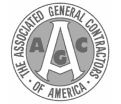Fire Alarm Components
You probably think of your building’s fire alarm as the red and white strobe lights on your walls or the pull stations by the doors. But there’s a lot more to it than that!
Standard Fire Alarm System Components
Most fire alarm systems consist of the following components:
- Fire alarm control panel – the system hub monitors inputs and system integrity, controls outputs and relays information.
- Primary power supply – primary power for your fire alarm system is usually supplied in the form of 124V or 240V AC from the power company.
- Secondary (backup) power supply – backup power supplies usually consist of lead-acid batteries used to power the system in case the primary power source fails.
- Initiating devices – these are your activation stations, and can be manual (pull stations) or automatic (smoke detectors).
- Notification appliances – notification appliances are things like flashing lights, strobe lights, horns, speakers, etc. that actually let people know of the danger in your building.
- Building safety interfaces – these are things like exit lighting, ventilation systems, etc. that make it easier for people to get out of the building once a fire has started.
Initiating Devices
There are two types of initiating devices: manual and automatic.
- Manual initiating devices – break glass station, buttons, pull stations and the like are all considered manual initiating devices. They should be located near the exits of your building and should be easily accessible, identified and operated.
- Automatic initiating devices – there is a pretty wide variety of automatic initiating devices out there, including heat detectors, smoke detectors, flame detectors, CO detectors, water flow detectors, etc. These will all sense changes in the environment and react automatically in the event of an emergency. New innovations in automatic initiating devices use cameras and computer algorithms to analyze visible effects of fire and movement in ways that other detection devices can’t.
Notification Devices
Notification devices are arguably the most important parts of your fire alarm system. Notification devices can use audible, visible, tactile, textual and even smell-based stimuli to alert the people in your building of fire. The most common types of notification devices are audio-visual, with a horn, bell or siren and flashing or strobe light combo.
Building Safety Interfaces
More and more, advanced building safety interfaces are being introduced that make escaping from burning buildings safer and easier. Examples of building safety interfaces include:
- Magnetic smoke door holders – these use wall- or floor-mounted electromagnets controlled by the fire alarm system magnetically hold doors in the open position. On command from the fire control (or failure of the power source), the doors close automatically and restrict the passage of smoke from one area to another.
- Duct smoke detectors–duct smoke detectors are designed to sense smoke moving through your ducts and will shut off fans and close dampers to prevent the smoke from moving to other parts of the building.
The more you know about your fire alarm system, the better decisions you can make about keeping your building’s fire protection up-to-date. If you have any additional questions about your fire alarms, or if you need inspection or testing of your fire alarms in Houston, call Kauffman Co.!
















